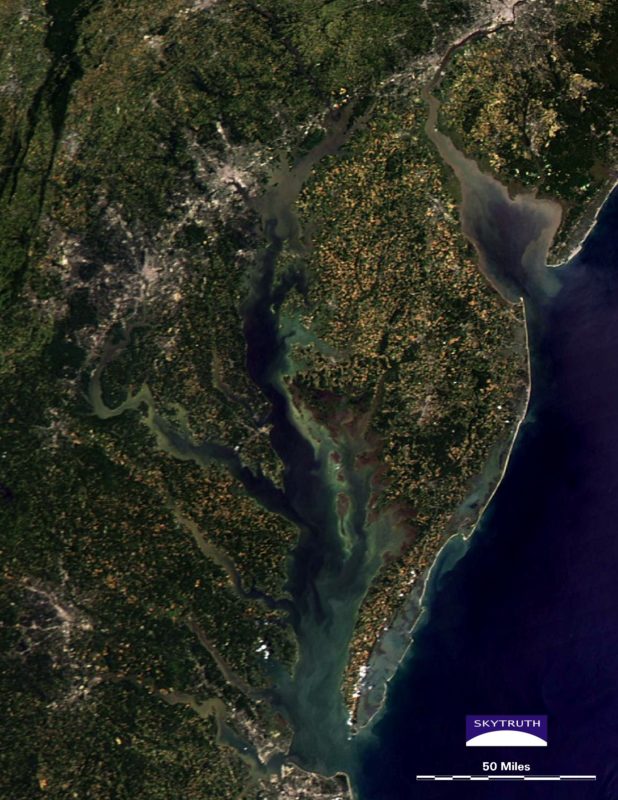It’s summertime. Time for swimming holes and sailboats, fishing poles and ice cream cones.
And time for dead zones. It’s July, and that means the area of deoxygenated water in the Chesapeake Bay is hitting its peak right about now. The algae have bloomed, thriving on a generous diet of fertilizer released from thousands of farms and millions of yards. And they’ve died, feeding bacteria that suck out all the oxygen from the water in parts of the Bay. With no oxygen, fish and crabs have fled to other parts of the Bay, and creatures that can’t move fast enough are dead. This year, scientists from the Universities of Maryland and Michigan predicted that the Bay’s dead zone would be larger than usual thanks to a surge of nitrogen flowing into the Bay from heavy rains this this spring. Unfortunately, recent readings show that they were right.
The Chesapeake isn’t the only American estuary with a summertime dead zone. The Gulf of Mexico has one too, receiving runoff from a watershed 20 times larger than the Chesapeake’s covering portions of the 31 states that drain into the massive Mississippi River and its tributaries. The Chesapeake’s dead zone is scary enough — as of early June it encompassed 20 percent of Maryland’s Bay waters alone, and it has grown larger since then. The Gulf of Mexico’s is even worse, typically measured by which small state it resembles most each year. In a good year it’s only the size of Delaware; in a bad one, it’s as big as New Jersey. This year, it’s looking more like Connecticut – somewhere in the middle.
And if you thought reaching agreement on a Bay cleanup plan involving six states and the District of Columbia was difficult, consider the obstacles in doing so with 31. After years of failed efforts, Bay states and the District worked with EPA to develop the Chesapeake Clean Water Blueprint in 2010 – called a “pollution diet” by the media and Total Maximum Daily Loads (TMDLs) by regulators. The Blueprint calls for each state to reduce pollution and hit specific milestones every two years to ensure that the Bay is clean by 2025. So far, states seem to be making good progress, although not on all fronts. But to some industry groups and their state allies, this success is even scarier than a state-sized graveyard in one of America’s most productive fishing grounds.
As we blogged this past winter when it occurred, 21 state attorneys general have submitted a legal brief in support of the Farm Bureau’s lawsuit challenging EPA’s authority to oversee the Chesapeake Bay Blueprint. Only one of those states – West Virginia – is connected to the Bay. Rather, the others, including many in the Mississippi River basin and even farther (including Alaska and Wyoming) fear that success in the Bay means they’ll soon have to clean up their own act.
Interestingly, West Virginia’s governor doesn’t seem to agree with his attorney general. Last month, most of the Bay state governors joined EPA Administrator Gina McCarthy and DC mayor Vincent Gray to sign the Chesapeake Bay Watershed Agreement – a more comprehensive plan that goes beyond pollution reduction targets to encompass sustainable fisheries, habitat protection, public access and more. Although West Virginia governor Earl Tomblin didn’t attend that ceremony, the official Chesapeake Bay Program website indicates that he is a signatory.
If he needs a little more convincing, perhaps he should grab his fishing pole, hop on sailboat and head out on the Bay this month. After all, it’s summertime. The dead zone should be just about perfect now.
(Update 7?21/14: Maryland’s Eyes on the Bay program released early July figures showing the dead zone is now smaller than usual. See figures here.)



4 thoughts on “Summertime blues: dead zones hit their peak”